I want to add fine and coarse adjustment to a power supply for both voltage and current control, for fine tuning I'll need four potentiometers either 10 turn or regular ones. I was thinking to trim two of this pots to reduce the cost and space and I came up with this idea:

simulate this circuit – Schematic created using CircuitLab
Basically converting an 8 bit PWM to voltage and using it as voltage reference, above circuit is the same as this one:

And the problem with above circuit is; if we set the coarse pot to output it's maximum voltage, it's like the coarse pot isn't in the circuit anymore and therefore we can't get any fine tuning.
In this question @Spehro Pefhany suggested a voltage divider "network" for coarse and fine tuning.
How can I combine digital(DAC) and analog(POT) to achieve coarse/fine tuning?

